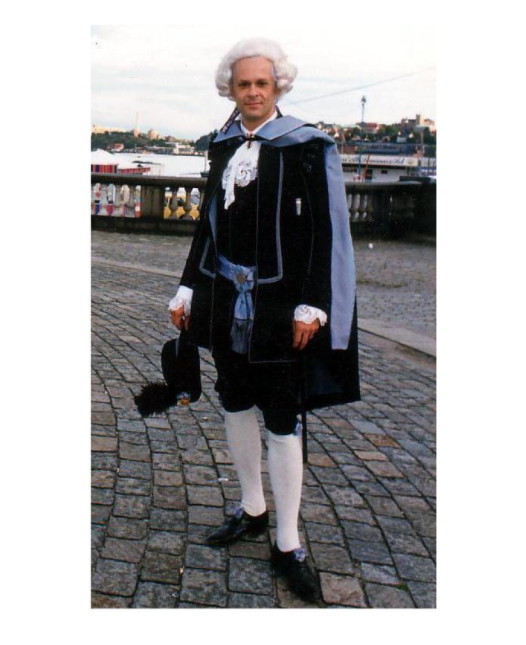Sverigedräkten
The royal men rarely wear the counterpart.



In 1902, in the time of the emerging national romanticism , the Swedish Women's National Costume Association was founded by Märta Jörgensen in Falun . The association worked for a liberation from the "domination of foreign fashion" and the members were encouraged to wear folk costumes. Jörgensen had worked in 1900 as a garden maid at Tullgarn's castle where Crown Princess Victoria of Baden advocated folk costumes. It became the highest fashion to wear folk costumes and Victoria liked to wear the Öland costume when she was at Solliden, and a version of the Vingåker suit was worn on Tullgarn.
The association saw that there was a need among those who wanted to wear folk costumes, but whose countryside lacked such clothing. Jörgensen contacted Gustaf Ankarcrona , on the advice of the artist Carl Larsson , who helped the association to compose the general Swedish national costume in Art Nouveau style . The artist Anders Zorn was also involved in its production. The goal was to develop a practical suit based on the Swedish rural costumes that would be worn by all women in the Sweden-Norway union.

The costume is nowadays generally called the Swedish costume, but is actually called "Swedish women's national costume association's party costume". It has a festive costume with a blue skirt with a yellow apron and a blue or red bodice with motifs of daisies , inspired by the strong folk colours. The yellow and blue colour came from the Swedish flag of the turn of the century (1900) , which was then made of wool , and could not be dyed in today's strong colours. In both colour combinations there are also two different variants, ie four different suits were developed. An everyday suit was also composed in a darker blue and with a striped apron, but no such preserve is known except in an old black and white picture from the newspaper Idun 1909, where Märta Jörgensen himself describes the costume and the story.
In Jörgensen's family, there are preserved parts of the suit that are probably the everyday apron and the holiday apron for the suit. The everyday apron has wider stripes in dark blue and red, and narrower in light yellow and natural white. At the top a multi-coloured ribbon, the material is probably cotton. The holiday apron is red with bright yellow stripes. The material is wool.
The costumes fell into oblivion during the Second World War and it was not until the mid -1970s that the Nordic Museum saw a copy of the costume, then of unknown origin, from a woman in Leksand . A wanted ad was published by Bo Skräddare in the newspaper Land and they received several copies of the suit. In consultation with the newspaper's readers, a men's suit in the same style and period was then developed. The Swedish costume became in its most famous design, in mainly yellow, blue, black and white, the official national costume in 1983 on the day of the Swedish flag , which later became the national day . It is nowadays worn by royal ladies on some official occasions and thus represents the whole country. It is also available for men in the same colours, but that version is not used as often in public contexts. Both women's and men's costumes are sometimes used at private ceremonies.
 = new reply since forum marked as read
= new reply since forum marked as read



